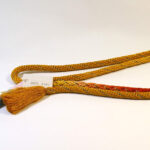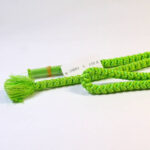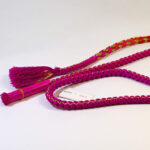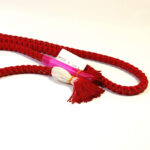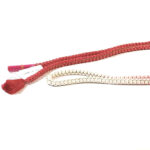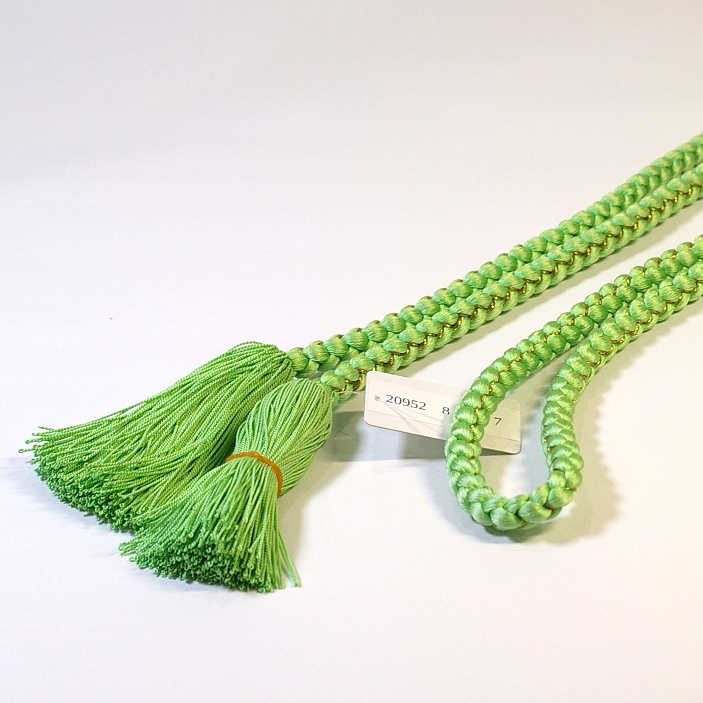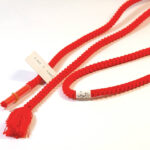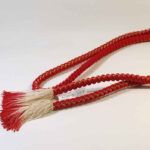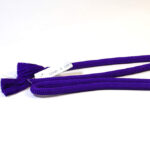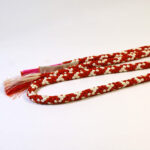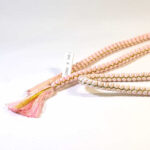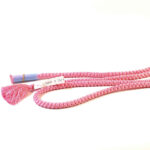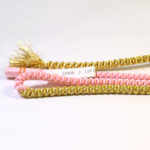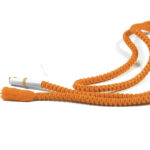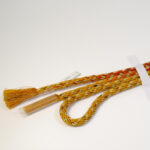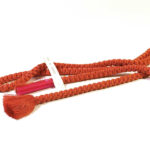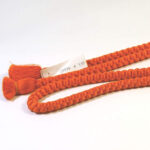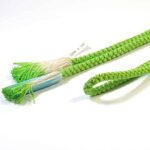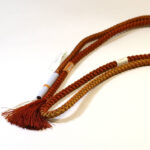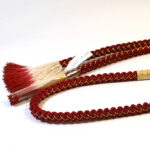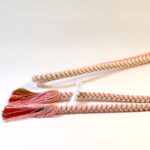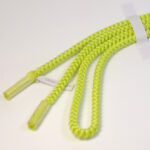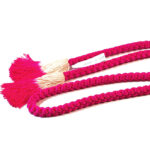Round
Round cord of obijime called“Marugumi-himo”is with no front or back side. It holds a higher level of formality than the flat type, and comes in both elaborate and simple styles. The elaborately decorated round cord, in particular, is considered highly formal and is used for events like the Coming of formal attire for unmarried women. On the other hand, the simple “Marugumi-himo”is often used for casual or everyday wear.
1. Material- Marugumi himo obidome is traditionally made of materials such as silk or cotton. Silk and cotton offer a supple and smooth texture, making them suitable for pairing with kimono or yukata attire.
2. Design:- Designs for obidome vary, ranging from solid colors to patterns, and even embroidered motifs. It’s common to choose a design that complements the season or matches the pattern of the kimono or yukata. Traditional patterns, floral designs, and depictions of animals are popular choices.
3.Length and Width – Typically, Marugumi himo obidome measures around 2 to 2.5 meters in length, providing enough to wrap around the waist of a kimono or yukata. The width typically ranges from about 3 to 5 centimeters.
4.How to Tie: – The obidome is wrapped around the waist of the kimono or yukata and tied to create a knot in front. There are various methods of tying, ranging from simple knots to more intricate ones. The shape and position of the knot can alter the impression of the attire.
5. Usage:- Marugumi himo obidome is used to cinch the waist when wearing kimono or yukata, enhancing the overall appearance of the attire. Additionally, it serves as an accent piece, complementing the ensemble and adding visual interest to the overall look.
Marugumi himo obidome is an essential accessory for traditional Japanese attire, contributing to its elegance and charm. Enjoy experimenting with different designs and tying methods to enhance your kimono or yukata ensemble.
結果の1~24/40を表示しています
